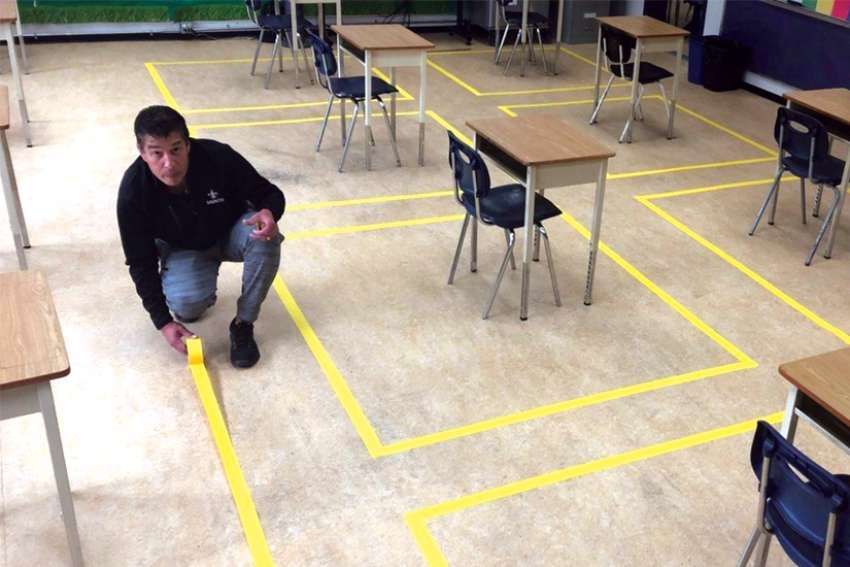The SickKids’ June 17 report, “COVID-19: Recommendations for School Reopening,” was a solid resource the Ontario government could have used to craft a province-wide strategy for the resumption of in-person school classes in September.
The report outlines guidance for a dozen procedures: screening for individuals entering schools, hand hygiene, physical distancing, cleaning, ventilation, protection of staff and at-risk persons or families, among other areas.
Instead, the Ontario government off-loaded the responsibility onto individual school boards to determine if, and under what conditions, their students will return to the classroom full-time or remain at home and learn online.
The third option, which is what most likely will happen, is a chaotic half-and-half approach that would see a maximum 15 children per class in school on certain days or weeks and at home with online supports during the other times.
School boards are supposed to submit their plans to the province by early August, with a final announcement to follow.
SickKids’ president and CEO Dr. Ronald Cohn is unequivocal about the role school plays in children’s mental and developmental well-being. “We are significantly underestimating the impact this has on children of all socio-economic classes,” Cohn said in a June 17 interview with Global News.
“We strongly believe that it is of utmost importance that we open schools in September.”
Three issues are at the heart of the re-opening decision: how likely children are to contract the coronavirus, how sick they get once they do have the virus and how easily they can pass it to others.
First, SickKids officials said that of 5,000 symptomatic children tested for COVID-19 from March to June at the hospital, only 30 tested positive for the virus. Of the 1,500 asymptomatic children tested, none were found to be positive. A review of 18 British studies found that children and youth under the age of 18 years were 56-per-cent less likely to catch coronavirus compared to adults.
When children do test positive for coronavirus, they’re less likely to get sick compared to adults. Drawing upon data from six countries, a recent study in the journal Nature Medicine found that symptoms appeared in 21 per cent of infections in 10- to 19-year-olds, compared to 69 per cent of infected adults over 70 years old.
A pre-print of a May 21, 2020 study in the journal Public Health found that 44 children in seven countries with high adult deaths had died of COVID-19 by May 19. An MIT Technology Review editorial notes that these 44 deaths are out of a population of 137 million children aged 19 years and under: “That’s a rate of less than one in three million.”
“Political leaders, communities, clinicians and parents should appreciate that the main reason we are keeping children at home and socially isolated is to protect adults. The ethics of this choice needs public debate,” says the study.
Studies on children’s likelihood of transmitting coronavirus is sparse and unclear. Researchers at the University of Calgary are leading a North American study aiming to shed more light on that question. Researchers in the Public Health study did acknowledge that vulnerable adults in particular “need shielding” from close contact with children.
It’s important to protect children and their families from illness, and shutting schools down was necessary in the early days of the pandemic. But now that the curve has essentially flattened in Canada, we need to be aware of the damage caused by keeping children away from school.
A 2007 U.S. study and a 1996 review is among research showing that children forget what they learned if kept out of school for periods of time, as evidenced by lower achievement scores. Experts widely agree that being in school is vital for children’s mental health and for their social, cognitive and emotional development.
The Ontario government should make full-time return to school the “Plan A” for September, using the SickKids report and/or other expert advice to ensure maximum safety for all. The blended approach that the government appears to be supporting should be the “Plan B” in case of a second wave.
Lessons could be learned from Quebec’s “experimental” opening of schools, which experts deemed largely successful. With the right approach, we can keep our children safe as they continue to learn and grow with one another.
(Majtenyi is a public relations officer who specializes in research communications at an Ontario university.)


